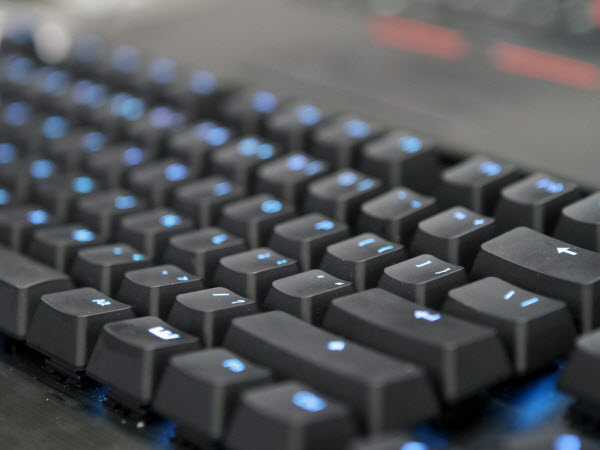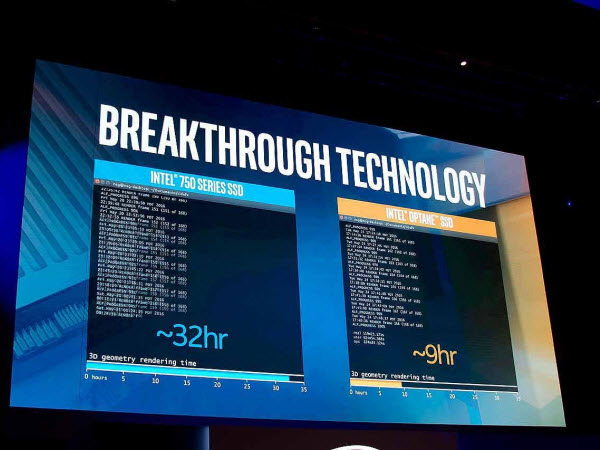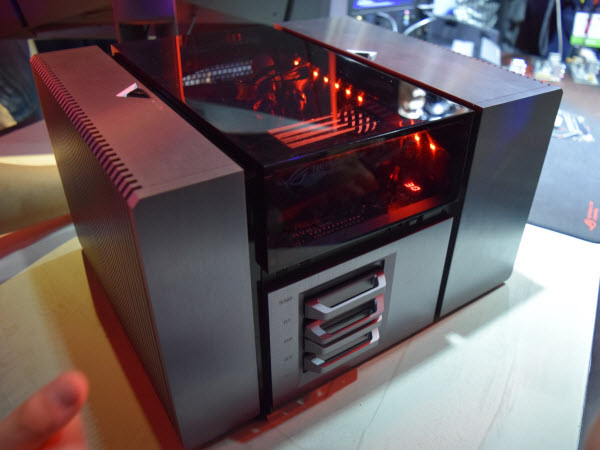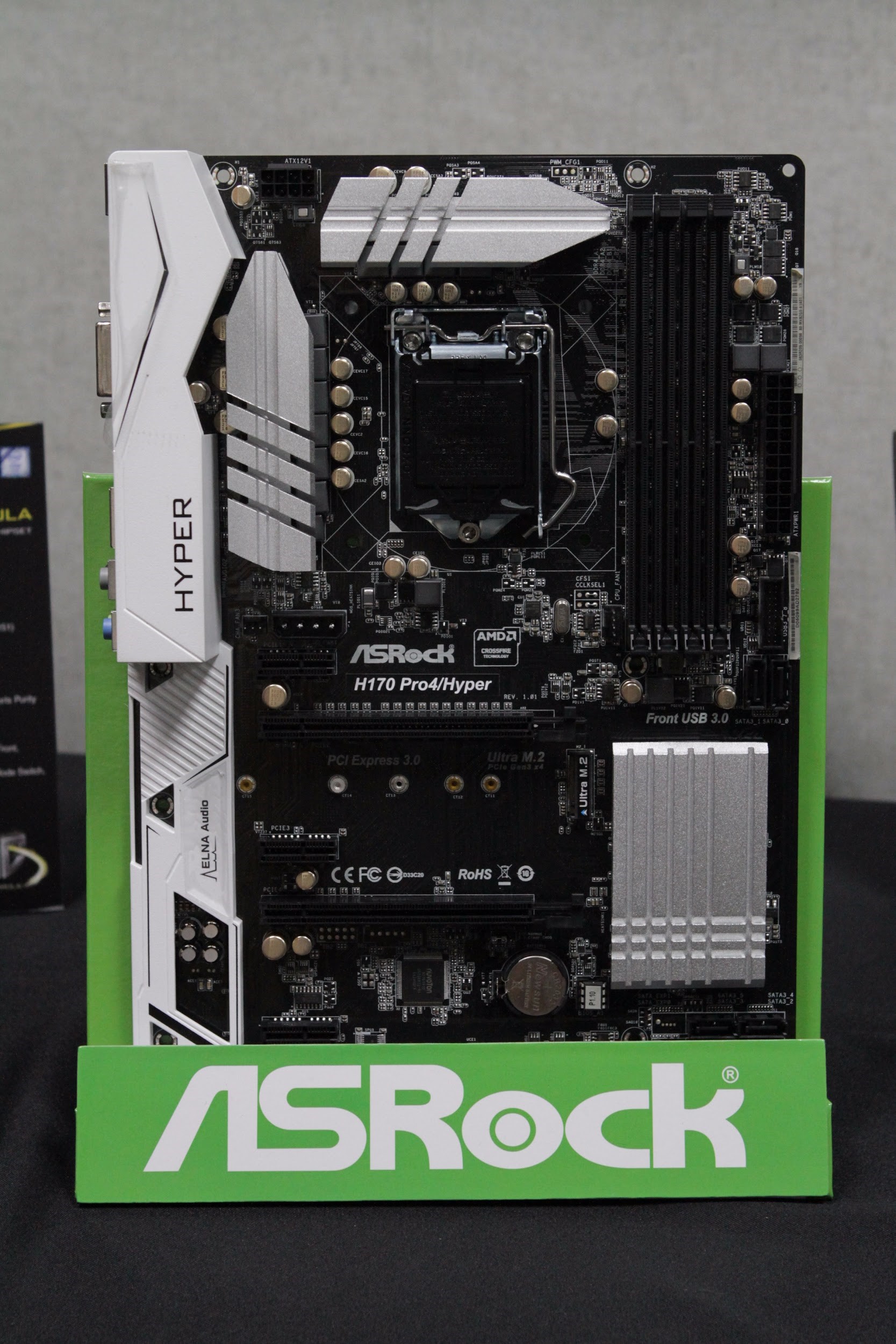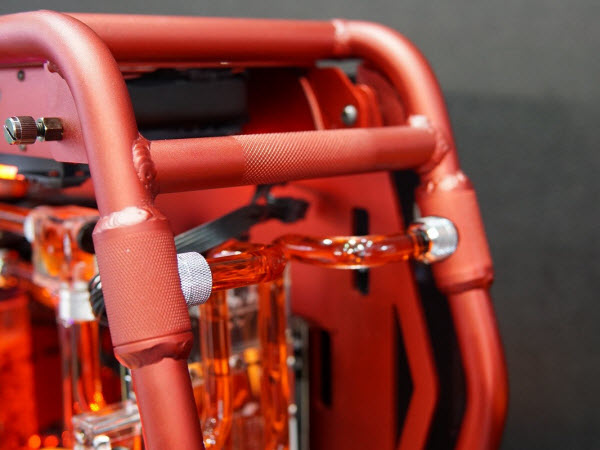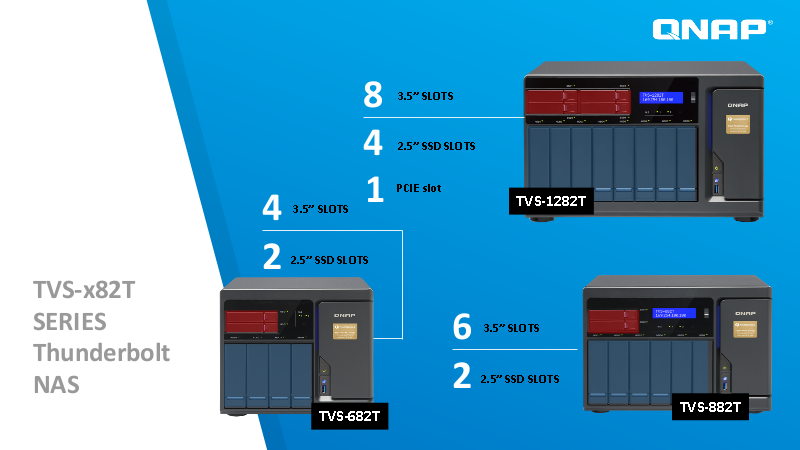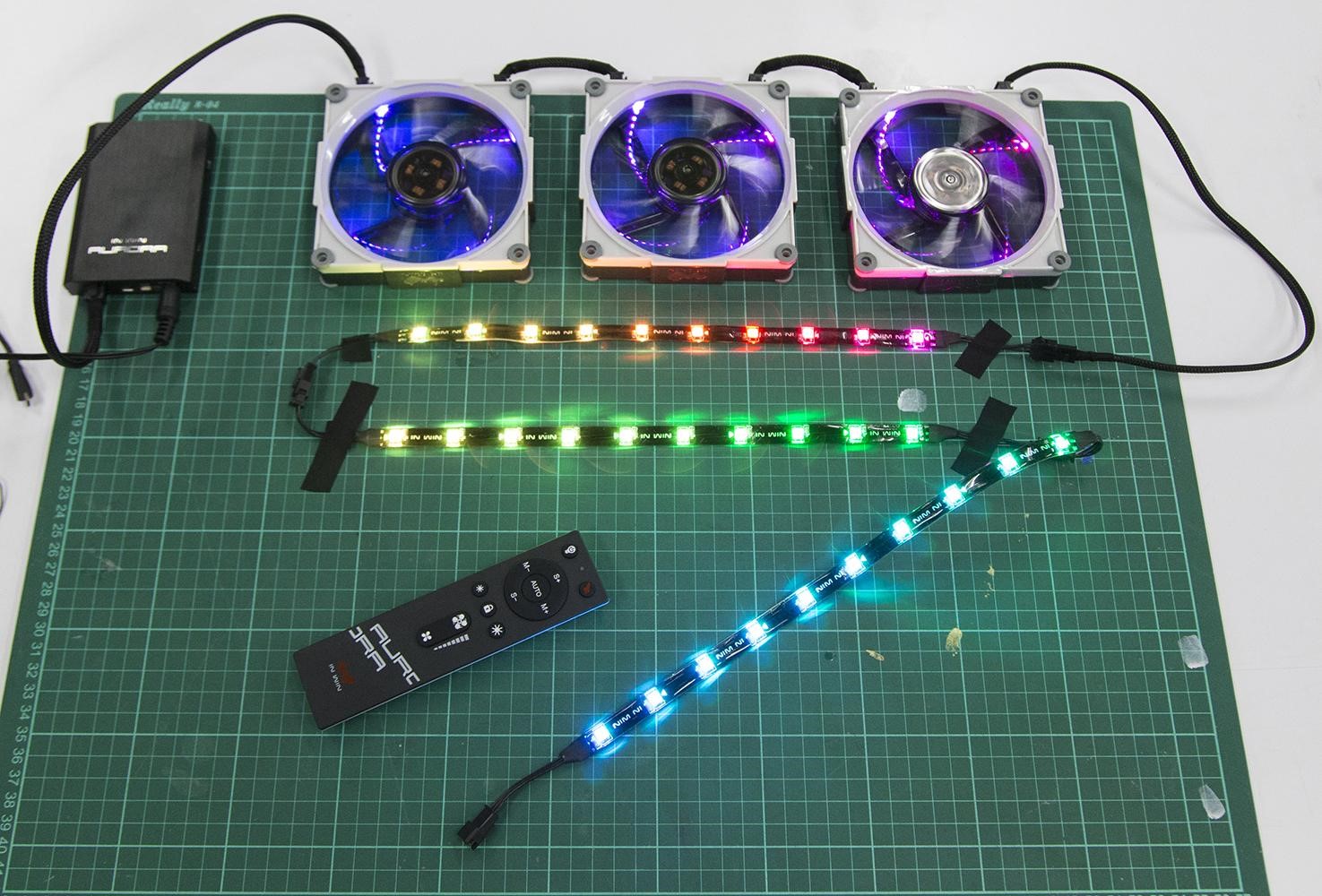Best Of Computex 2016
Computex is the biggest annual showcase of enthusiast products and new technology innovation. Here are some of our favorite products from the show.
Computex Awards 2016
The Tom’s Hardware team was out in force at Computex 2016, scouring the halls of the TWTC and Nangang Exhibition center, and the suites of the Grand Hyatt, for the latest enthusiast news, gear and scuttlebutt. The skies of Taipei remained gray all week, but the rains that occasionally doused our bodies did nothing to dampen our spirits. Nor did the 6.1 earthquake we experienced.
We have buckets of stories for you, those already published and many forthcoming, and what follows is our picks for the best, most interesting and most promising tech the Tom’s Hardware team discovered at the show. From a new CPU launch to emerging tech to exceptional cases and cooling apparati, there was much to see and touch and critique.
MORE: All Computex News
Best Peripheral Innovation: Wooting One Optical Switches
Sometimes things are too good to be true. Sometimes they’re not. Wooting One’s innovative optical switches fall into the latter category.
The Wooting One’s switches can function as analog switches, meaning that instead of a simple on/off function, you can apply gradations of pressure to move faster or slower. The magic is a combination of the Flaretech optical switches and some clever firmware that enables the PC to read the switch input as an Xbox controller.
The One is still technically a prototype, but it works, and it works quite well. We were able to run (and walk) through Overwatch, and although it took some getting used to the feel of it, once we toggled back to keyboard mode (on/off only), the difference was jarring.
Wooting is a small outfit with some significant challenges ahead, but so far what they’ve been able to create is nothing short of impressive.
Get Tom's Hardware's best news and in-depth reviews, straight to your inbox.
MORE: All Peripherals Content
Biggest No-Show: Intel XPoint
Intel brought 3D XPoint to Computex 2016, but it did not bring any concrete specifications along with it. The company has taken heavy flak from many sides for its vague marketing tactics, which rely largely upon obfuscated claims, such as “1000X the performance and 1000x more endurance than NAND, and 10x the density of DRAM.” In spite of the claims, the company refuses to reveal any basic information, such as performance, endurance and price, or even what type of memory technology 3D Xpoint is using.
To make matters worse, the company has embarked on a traveling roadshow of ambiguous demonstrations that are designed specifically to display hero numbers without actually revealing any tangible performance information.
The company was at it again during Computex 2016 when it displayed a system with 3D XPoint rendering a complex fluid dynamics demo in comparison to an SSD-powered system. The end result was impressive. The 3D XPoint system shaved 23 hours from a 32-hour rendering job, but Intel did not reveal any information on the conditions of the test or product specifications. The company indicates that it is going to begin manufacturing 3D XPoint-powered Optane SSDs by the end of the year, so we expect the roadshow to continue rolling for some time.
MORE: Latest Storage News
Best Innovation: Asus Project Avalon
Asus’ efforts in developing a modular motherboard and form factor is an astounding redirection in how we look at motherboards. For decades, we’ve been limited to picking a motherboard with various connections that appeared to best meet our needs, but if we ended up needing more, we were out of luck. With Project Avalon, all of the ports on the motherboard are upgradeable. Certain third-party controllers that are traditionally hard wired onto the motherboard are also replaceable.
Project Avalon also includes a revolutionary case and power supply that simplifies component installation.
MORE: Best Motherboards
Most Gutsy Move: ASRock Hyper OC Series
ASRock’s Hyper OC series motherboards contain a second clock generator that allows the board to BCLK OC non-K Intel Skylake CPUs. We’ve seen this story play out all year, much to Intel’s chagrin, and often resulting in motherboard manufacturers backing away from enabling this functionality. In short, this is a risky move, and may cause problems for the long term success of the Hyper OC series. However, it is a feature that numerous PC enthusiasts want and ASRock seems determined to deliver on it.
MORE: All Motherboard Content
Best SSD: Ballistix TX3
Crucial spun off its Ballistix product line as a new brand (designating it as being “by Micron”) at Computex this year. Three system memory products carry over from Crucial, but the star is clearly the new PCIe NVMe SSD. The TX3 uses Micron's new floating gate 3D NAND flash technology and pairs it with Silicon Motion's SM2260 controller.
Ballistix spilled some preliminary performance data that looks impressive. We expect around 2400 MB/s sequential read and 1000 MB/s sequential write speeds. Random read and write performance should top 140,000 IOPS but the numbers will not be solidified for another month.
We expect Micron's eSports and gaming brand (that is, Ballistix) to attack the market with aggressive pricing that will enable more users to benefit from NVMe's reduced latency.
MORE: Best SSDs
Best Chassis: ID-Cooling Stream
At the Tom’s Hardware office we’ve joked about ideas like a liquid-cooled case from time to time, but ID-Cooling actually managed to pull it off with its new Stream cases. Alright, while it’s more of a chassis than a case, the concept here is that the frame is made of metal tubes with G1/4” threads into which you can route custom water cooling, making the chassis part of the liquid cooling loop.
To say that the cases are functional as is would be overstating things: they don’t have dust filters or noise damping, and cable management is nearly impossible.
Nonetheless, the Stream cases are certainly the most eye-catching and intriguing cases we’ve seen at Computex, and they’re not even just a concept product: ID-Cooling already has two models in mass production.
MORE: All Case Content
Best Case: Cryorig Ola
This year’s best case award goes to Cryorig for its bold new case, which breaks free from the mainstream “box case” standard. The Ola is intended to take the traditional HTPC and turn it into a living room centerpiece by putting it in a beautiful cylindrical case that will complement the existing decor. The Ola will be available in both a wooden and brushed aluminum finish, making it a fit for a wide range of living room settings [Editor’s note: Does it come in Ikea?].
In addition to its smooth looks, the Ola is also designed to perform. The case features room for a full size desktop graphics card, as well as a mini-ITX motherboard, CPU cooler, SFX power supply, and single 3.5” hard drive, or a pair of 2.5” SSDs. It also packs plenty of cooling power, with dual shark-gill side air intakes, and a 140mm exhaust fan on top, which gives it the ability to handle all mainstream desktop CPUs, including 100-watt Intel Core i7 CPUs.
MORE: Best Cases
Best NAS: QNAP TVS-x82T Series
QNAP used Computex to springboard the new TVS-x82 NAS and TVS-x82t NAS/DAS combination systems into the public domain. Armed with advanced features and next generation technology, these systems blur the lines between prosumer and enterprise capability. The systems will ship in three bay configurations that range from eight 3.5-inch + four 2.5-inch, to four 3.5-inch + two 2.5-inch bays.
All three systems ship with several CPU and memory options that allow users to balance performance and value to suit specific environments. These are the first products in this price range that support NVMe SSD caching, a technology previously appearing in $10,000+ enterprise systems.
The models with a 'T' on the end of the name increase functionality by adding Thunderbolt 2 for direct-attached capability. Users can manipulate data at high speeds over a DAS connection and still calibrate with others over a 10-gigabit network.
MORE: All Storage Content
Best Surprise Announcement: AMD Zen
AMD’s forthcoming Zen CPU made its physical debut at Computex 2016 during an AMD press event. The company displayed a dynamic rendering that was created, edited and played back with the Zen processor, which proves it is working silicon. The company claimed a 40 percent IPC increase in comparison to its current processors, and if true, the 8-core/16-thread CPU will provide AMD a more competitive footing against Intel.
The AMD vs Intel rivalry has taken the form of a David vs Goliath battle over the last few years, and Zen is the best near-term hope for AMD to regain some of its luster. AMD is already sampling silicon to its close partners, which indicates the processor is well on its way to market.
This also means that the hype will soon reach a fever pitch.
MORE: Best CPUs
Best Cooling: In-Win Aurora Fans
Even with all of the other new RGB LED case fans at Computex this year, In-Win still managed to stand out with its new Aurora fans. The best feature of the fans is their modular-like design, which enables them to be daisy-chained with other Aurora fans as well as the company's new LED strips. Even better, the company's innovative controller allows each of the fans and LED strips in the chain to be individually controlled, for virtually limitless customization, all while only using a single cable to connect to the controller.
In order to actually control the fans and LED strips, In-Win will provide users with an RF remote control, as well as a Windows software program. The remote control will provide quick, coarse control over the system, while the Windows software will provide users with much finer control, including the ability to change the lighting and speeds on the individual fans and LED strips.
The fans will also come with a great deal of efficiency, boasting 40.26 CFM of airflow at 1400 RPM, while still maintaining a whisper quiet 2.7 dBA of noise. Finally, the fans also come with an optional turbo mode which will temporarily bump the fan speed up to 2000 RPM for user who need the extra cooling power.
MORE: Best CPU Cooling
Tom's Hardware is the leading destination for hardcore computer enthusiasts. We cover everything from processors to 3D printers, single-board computers, SSDs and high-end gaming rigs, empowering readers to make the most of the tech they love, keep up on the latest developments and buy the right gear. Our staff has more than 100 years of combined experience covering news, solving tech problems and reviewing components and systems.

